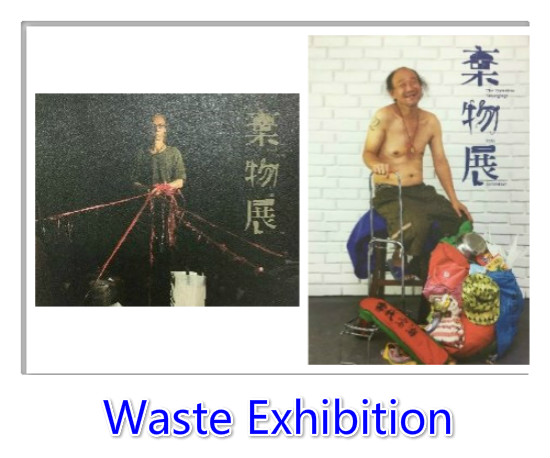

Taking place at No. 27, Lane 173, Kangding Road, this exhibition displays transformed wastes. It is hosted by “Homeless Soft Taiwan,” with the assistance of Chunghwa Telecom Union, Zuo-Mu Interior Design, The Homeless Workshop, and Dasha Photo Studio. As personal belongings of the homeless are often treated as wastes and thrown away arbitrarily, the exhibition organizer Cheng Yi-Wen wishes to call upon the government to treat this problem seriously.
Homeless people are often kicked around from one place to another and in the meantime, suffer from the “waste risk,” that is, the personal belongings they leave at bus or train stations are often treated as wastes and thrown away arbitrarily. Kuo Ying-Ching, the executive commissioner of Homeless Soft Taiwan, states that, in the name of urban development, the government chases the homeless away, exploiting those who are in the bottom of the society. Such an act of “social exclusion” is injustice. The homeless ask, if not out of other options, who would like to live on the street? They wish the society could give the homeless an opportunity to survive. “This is our belongings, not trash, not wastes.”
It is a very meaningful exhibition, which not only advocates for the homeless, but also teaches its visitors how to “DIY” and transform waste materials, reduce trash and become more aware of the environment. By wrapping a towel with newspaper, and tying it up with a rubber band, a pillow for a night’s sleep on the street is made. A broken wooden window can be turned into a photo frame, and a Styrofoam bowl can be reused. With some ingenuity, broken items are given a new life. How incredible! Furthermore, the exhibition teaches homeless people how to turn waste materials into useful things as well as skills like making hand soaps and scrapbooks, hoping that they could be self-reliant.
However, despite of the reutilization plan of Taipei City government, space utilization and arrangement in Bo-Pi Liao are still not very vigorous, failing to demonstrate the original cultural significance. We suggest that Bo-Pi Liao should further promote local traditional industrial activities, introducing exhibitions and performances of traditional crafts in Wanhua and Bo-Pi Liao. By connecting existing historical buildings with local cultures, tourist sites that incorporate local community features could be built. Surrounding sites like Herb Lane, Guanzhou Street, Guiyang Street, Longshan Temple, Qingshangong Temple, and Qingshui Temple could attract tourists, and thus, cultural and historical assets of Bo-Pi Liao can be promoted. Through an active preservation of unique historic buildings and landscape planning, as well as combining the influence of the cultural and creative industry on the economy, it could play an important role in sustainable urban development. These allow the concept of sustainability to naturally become a framework for both economic and cultural development, contributing to the preservation, reutilization and sustainable management of cultural assets. (Photos in below are taken by our team members.)
|

